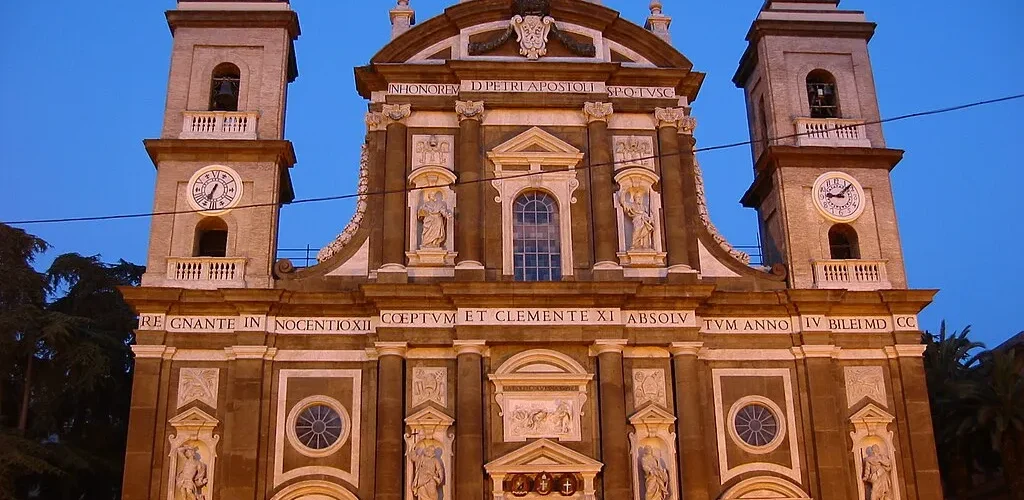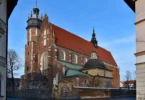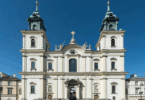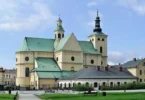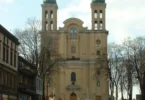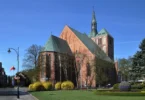Introduction
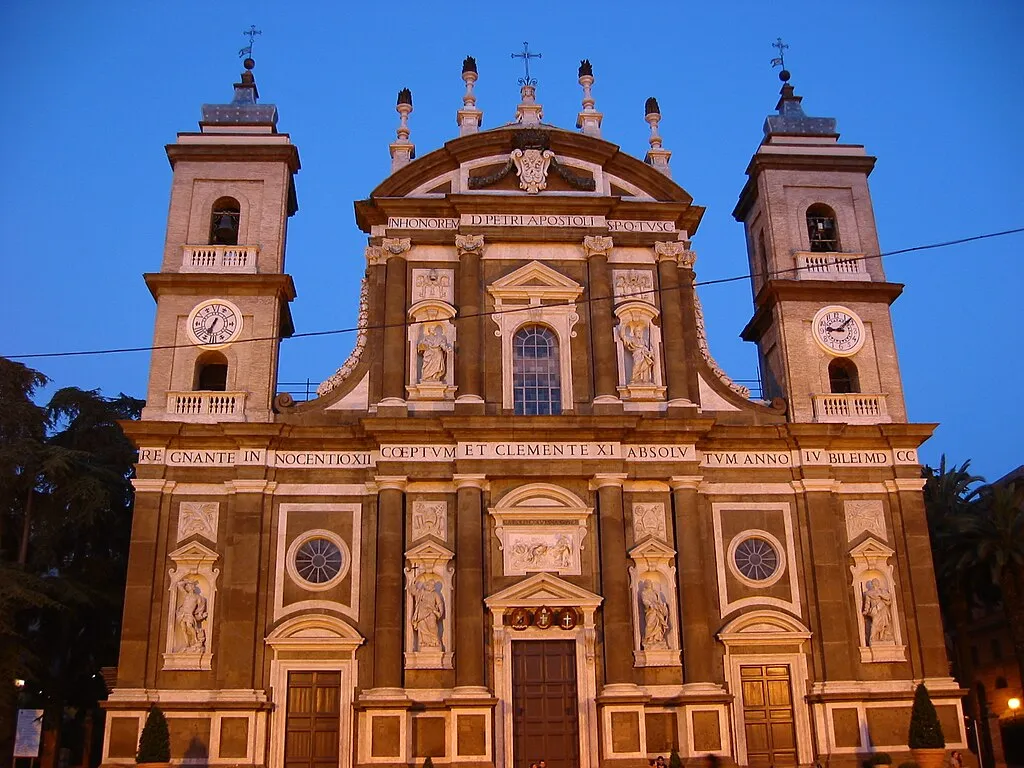
The Frascati Cathedral (Italian: Basilica Cattedrale di San Pietro Apostolo, also known as Duomo di Frascati) is a prominent Roman Catholic cathedral and minor basilica located in the town of Frascati, Italy. This historic cathedral is dedicated to Saint Peter the Apostle, one of the twelve apostles of Jesus and the first pope of the Catholic Church. The Frascati Cathedral serves as the episcopal seat of the Bishop of Frascati, making it the central place of worship and religious authority for the Diocese of Frascati, which is part of the Province of Rome. As the principal church in Frascati, it plays a significant role in the spiritual and cultural life of the community. The cathedral’s long history, architectural grandeur, and its position as a minor basilica contribute to its importance as both a place of devotion and a historical landmark in the region.
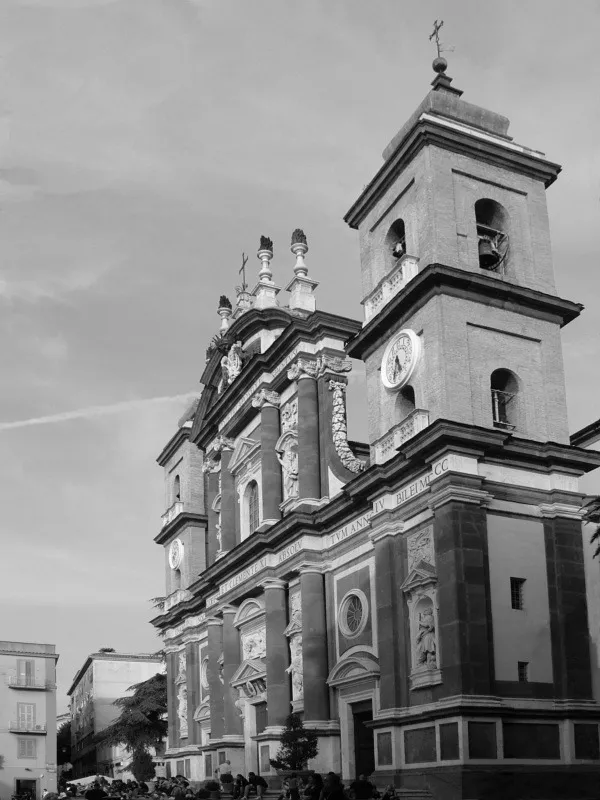
The Frascati Cathedral, also known as the Basilica Cattedrale di San Pietro Apostolo, has a rich and complex history that spans several centuries, with its role as the seat of the Tusculan Diocese being marked by the succession of five previous cathedrals. These earlier cathedrals included the Labicana Quintanense, located near the “Statio ad Quintanas” on the Via Labicana at the XV mile, and the Tusculan of the City of Tusculum. Other locations that served as the cathedral’s seat included the Church of Santa Maria in Monastero in Rome, situated on the Esquiline Hill, and from 1538, the Ancient Church of Santa Maria in Vivario in Frascati. However, as the town of Frascati grew in population, the Santa Maria in Vivario church became insufficient to accommodate the increasing number of worshippers. This was clearly noted in a report from Cardinal Bishop Alfonso Gesualdo on October 16, 1588, which highlighted the need for a larger church.
The Construction of the New Cathedral
The decision to build a new cathedral was made by Cardinal Bishop Tolomeo Gallio after he recognized the limitations of the existing parish church. In response to this, on May 24, 1599, a consultation was held among the Governor of the city, the Community Council, and Pope Clement VIII to discuss the construction of a new church. Initial funds for the project were provided by the Pope, amounting to 1000 scudi. Additional funds were raised through the local community, private donations, loans from religious and private institutions, and even a tax on local wine sales, which was implemented in 1608. The architect Ottaviano Nonni, known as “il Mascherino”, was commissioned to design the cathedral. However, due to financial constraints, the progress of the construction was slow. By 1608, Cardinal Bishop Mariano Pierbenedetti proposed that the works be completed in their current state, with the building being temporarily covered to allow it to be used. This proposal was accepted, and the first Mass in the new cathedral was celebrated in 1610, after 8000 scudi had been spent on the project.
Consecration and Further Works
The cathedral continued to undergo modifications and additions. In 1636, the cathedral was officially consecrated by Cardinal Bishop Fausto Poli, marking a significant milestone in its development. The final consecration of the last minor altar, located in the Chapel of Sant’Isidoro, was completed in 1680 by Cardinal Bishop Cybo. The cathedral still lacked a proper façade, a deficiency that was addressed by the Community of Frascati. On June 24, 1696, a resolution was passed to begin the construction of the façade, and the architect Girolamo Fontana was commissioned to design the project. Construction on the façade began in 1698 at a cost of 30,000 scudi. In 1703, Cardinal Bishop Lorenzo Corsini oversaw the reorganization of the presbytery, and in 1747, two clocks were installed on the bell towers flanking the façade. Cardinal Bishop Henry Benedict Stuart, Duke of York, donated a new organ to the cathedral in 1788, further enhancing its musical capabilities.
Restoration and Damage in the 19th and 20th Centuries
By 1857, the cathedral was in a state of significant decay, prompting Cardinal Bishop Antonio Maria Cagiano de Azevedo to urge the community of Frascati to undertake necessary repairs. These works were completed in time for the diocesan Synod held on May 24, 1858. In 1908, the cathedral’s floor was redone, with particular attention given to the numerous sepulchral inscriptions that adorned the floor. The cathedral was heavily damaged during the Allied bombing of Frascati on September 8, 1943, which caused widespread destruction across the town. The cathedral’s presbytery was particularly affected, and the organ was destroyed. However, the side chapels of the naves suffered only minor damage, and the high relief of Ferrucci remained intact. The cathedral underwent extensive reconstruction by the Civil Engineering Department and Bishop Biagio Budellacci, with the rebuilding process concluding in 1949. Further repairs were made in 1965, when the roof of the cathedral was restored, and the facade was renovated in 2002.
Recognition as a Minor Basilica
On March 1, 1975, Pope Paul VI formally recognized the Frascati Cathedral as a minor basilica, a significant honor that underscored its importance within the Catholic Church and its role in the religious and cultural life of Frascati. Thus, the Frascati Cathedral has undergone significant transformations over the centuries, evolving from a small parish church to a majestic cathedral that serves as the heart of Catholic worship in Frascati. Its rich history reflects the challenges and triumphs of the local community, as well as its enduring religious significance.
Architecture of Cathedral Basilica of St. Peter the Apostle, Frascati, Italy
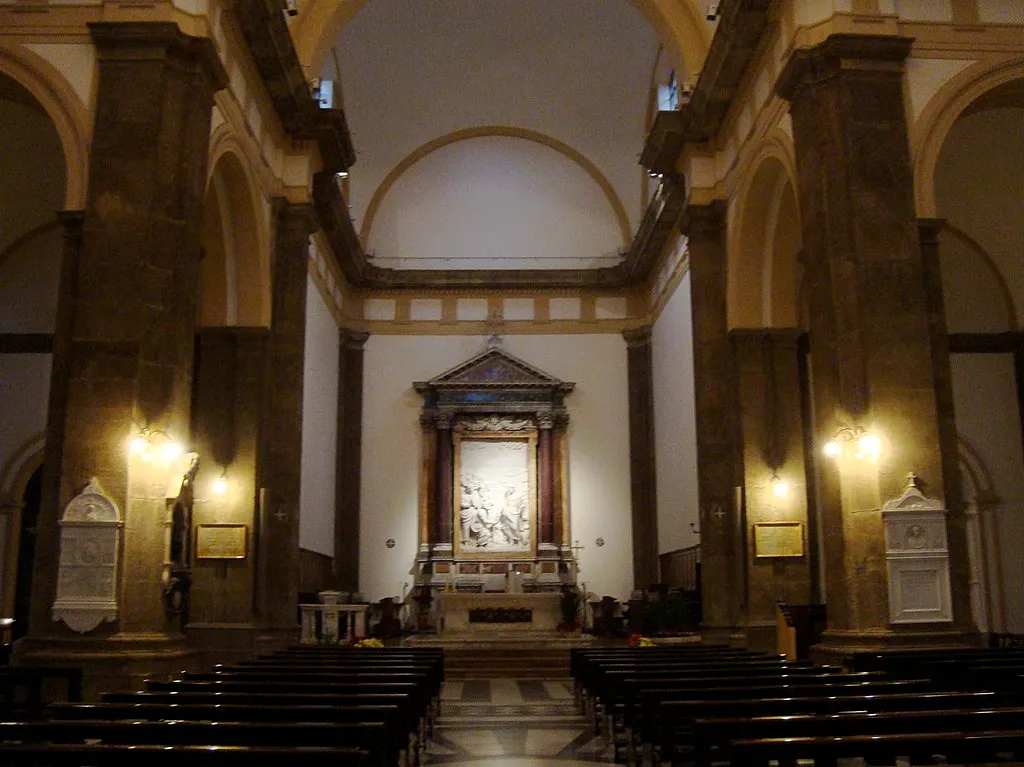
Architectural Style : Baroque architecture.
Exterior of the Cathedral
The Cathedral of San Pietro is located in the historic center of Frascati, specifically in Piazza San Pietro, a central square in the town. The cathedral’s façade is a striking feature, constructed using Tusculan stone sourced from the Monte Porzio Catone and Frascati quarries, complemented by travertine from Tivoli. These materials give the façade a distinguished appearance, combining local stone with elegant details that reflect the architectural style of the region. The façade is divided into two main bands by a marble cornice, creating a visual separation between the lower and upper portions. In the lower band, there are four Tuscan semi-columns placed centrally and two pairs of Tuscan pilasters on the sides, which provide structural support and add visual weight to the architecture. The lower portion of the façade is further articulated by the three portals, which are key architectural elements allowing access to the cathedral.
Interspersed with these portals, there are four niches, each housing a statue of a saint. These statues, listed from left to right, are:
- Saint Sebastian – Sculpted by Girolamo Gramignoli
- Saint James the Less – Created by Giuseppe Napolini
- Saint Philip the Apostle – Crafted by Vincenzo Felici
- Saint Rocco – Made by Pietro Maiuri
Above the central portal is a marble high relief depicting Jesus rebuking Peter for his lack of faith, a work of art created by the sculptor Bernardino Cametti. This dramatic scene captures a significant biblical moment and adds a powerful narrative element to the façade. In the upper band, the façade features a round-arched window framed by niches that house two statues: Saint Peter on the left and Saint Paul on the right. These statues were created by Andrea Fucigna and represent the two foundational apostles of Christianity.
Interior of the Cathedral
The interior of the Cathedral of San Pietro follows a Greek cross floor plan, providing a symmetrical and spacious layout. The central nave leads into a square apse at the end, further emphasizing the cross-shaped layout of the building. Originally, the interior of the cathedral was adorned with elaborate frescoes. However, following the devastating bombings of 1943, much of the interior was destroyed. The current design is simpler, with ivory-colored paint covering the walls in place of the original frescoes, creating a clean and serene atmosphere. The interior features barrel vaults over the nave and the two transept arms, adding a sense of height and grandeur to the space. The four ambulatories surrounding the central space are topped with sail vaults, providing a sense of openness and flow to the layout.
The presbytery is located in the apse and was modified after the Second Vatican Council to better reflect the liturgical changes of the period. The marble altar stands at the center of the presbytery, making it the focal point of the cathedral’s worship space. The back wall of the presbytery retains an altarpiece from the original baroque altar, featuring the high relief “Delivery of the Keys to Peter” created in 1612 by the Florentine sculptor Pompeo Ferrucci. This significant work of art is framed between two Corinthian columns, contributing to the baroque aesthetic of the space. Beneath the altarpiece is the episcopal chair, symbolizing the authority of the bishop.
Pipe Organs
The cathedral houses two pipe organs, which contribute to its rich acoustical environment and support its musical heritage.
Main Pipe Organ:
Located on the wooden choir at the counter-facade, the main pipe organ was built in 2009 by the Bonizzi-Inzoli organ-building company. It features a mixed transmission system, with mechanical action for the manuals and pedal, and electric action for the registers. The organ includes three keyboards (58 notes each) and a concave-radial pedalboard with 30 keys. This instrument is used for major liturgical services and musical performances within the cathedral.
Positive Organ:
Located in the second ambulatory on the right, the positive organ is a modern addition to the cathedral’s musical ensemble. It features a single keyboard and lacks a pedalboard, offering a simpler, more compact sound suitable for smaller performances.
Notable Artworks and Memorials
The interior of the cathedral houses several significant artworks, including a wooden crucifix dating back to the 11th century, originally from Tusculum. The Madonna (Mysteries of the Rosary), attributed to the renowned artist Domenichino, and a 14th-century Madonna and Child located in the Chapel of the Gonfalone, which was retouched by Domenichino, are also notable pieces. Additionally, on the interior side of the west front, there is a bronze “Holy Year Cross” from 1750, marking a significant year in the cathedral’s history.
The 1943 Bombing
The bombing of 8 September 1943 during World War II had a devastating impact on the cathedral. Much of the interior was destroyed, leaving it bare except for a small chapel to the right. The restoration following the bombing led to the more minimalistic design seen in the cathedral today.
Funerary Monument to Charles Edward Stuart
A prominent funerary monument can be found in the nave of the cathedral, on the inner side of the facade. This white marble monument commemorates Charles Edward Stuart, also known as the Young Pretender, who died in 1788. His funeral was held at the cathedral, with his brother, Henry Benedict Stuart, the Cardinal Duke of York and bishop of Frascati, presiding over the ceremony. The memorial includes a commemorative tablet, and when Charles Stuart’s body was later transferred to Saint Peter’s Basilica in 1807, his heart and praecordia were left behind in a small urn placed under the floor beneath the monument. This gesture was part of Henry Benedict Stuart’s episcopal concern for his brother, and the relics are still present today as a historical and religious tribute.
Feast Day
Feast Day : 29 June
The feast day of the Cathedral Basilica of St. Peter the Apostle in Frascati, Italy is celebrated on June 29th, which is the feast day of Saint Peter and Saint Paul. This day honors the two apostles, Saint Peter and Saint Paul, who are central figures in the Christian faith and are the patron saints of the cathedral. The feast is observed worldwide in the Roman Catholic Church, and it holds particular significance for the Frascati Cathedral, as it is dedicated to Saint Peter the Apostle.
Church Mass Timing
Yet to Update
Church Opening Time:
Daily : Open 24 hours
Contact Info
Address :
P.za S Pietro, 2, 00044 Frascati RM, Italy.
Phone : +39069420238
Accommodations
Connectivities
Airway
Cathedral Basilica of St. Peter the Apostle, Frascati, Italy, to Leonardo da Vinci International Airport , distance between 40 min (41.6 km) via A90/E80.
Railway
Cathedral Basilica of St. Peter the Apostle, Frascati, Italy, to Frascati Railway Station, distance between 5 min (1.3 km) via SR218.

